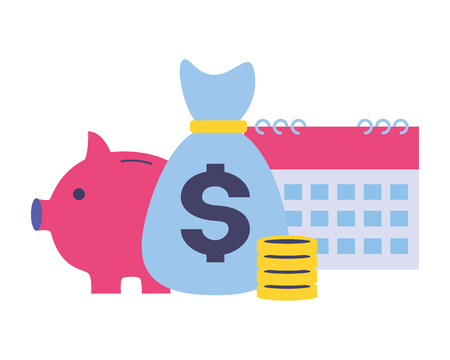Seamless Digital Access
One of the biggest game-changers in modern high-yield savings accounts is how easy it is to manage your money anytime, anywhere. Forget about driving to a bank or waiting in line—today’s accounts put everything you need right at your fingertips. Let’s break down what makes this possible:
Easy-to-Use Mobile Apps
Most leading high-yield savings accounts come with mobile apps designed for real life. With just a few taps, you can:
- Check your balance instantly
- Transfer funds between accounts
- Set up automatic savings plans
- Get real-time alerts and notifications
Intuitive Dashboards
Your account dashboard isn’t just a list of numbers—it’s a powerful tool that helps you understand your finances at a glance. You’ll see:
| Feature | What It Means for You |
|---|---|
| Savings Progress Trackers | Visualize how close you are to hitting your goals, like saving for a vacation or building an emergency fund. |
| Spending Insights | Quickly review where your money goes and spot opportunities to save more. |
| Interest Calculators | See how much extra cash your account is earning—automatically updated as rates change. |
24/7 Account Access
Your schedule is unique, and modern banks get that. Whether it’s midnight or midday, you have total control over your savings. Log in any time to:
- Review transactions from the past days, weeks, or months
- Move money when you need it—no waiting for “banker hours”
- Contact customer support via chat or secure messaging if questions pop up
The Bottom Line on Digital Access
If you’re not already taking advantage of these digital features, now is the perfect time to start. Managing your savings has never been this simple—or this empowering.
2. Automated Savings Tools
Effortless Saving with Modern Features
Modern high-yield savings accounts are packed with automated tools designed to help you save more without even thinking about it. These innovative features take the guesswork out of saving and make it easier to reach your financial goals, all while fitting seamlessly into your daily life.
Popular Automated Savings Tools
| Feature | How It Works | Why You’ll Love It |
|---|---|---|
| Round-Up Transfers | Your bank automatically rounds up each debit card purchase to the nearest dollar and transfers the difference into your savings account. | You save a little bit every time you spend, which adds up quickly over time. |
| Customizable Automatic Deposits | Set up recurring transfers from checking to savings—weekly, bi-weekly, or monthly—based on your preferences and budget. | Consistent, hands-off savings that fit your cash flow schedule and financial goals. |
| Smart Savings Goals | Create specific goals (like an emergency fund or vacation) and let the app track progress and suggest deposit amounts to keep you on target. | Keeps you motivated by showing real-time progress toward what matters most to you. |
How These Tools Help You Grow Your Balance
- No More Guesswork: Automation means you don’t have to remember to move money manually—it just happens in the background.
- Personalized Approach: Most banks let you customize how much and how often you want to save, so it fits your lifestyle.
- Goal-Oriented Motivation: Seeing your progress toward specific savings targets can help you stay focused and make smarter money choices.
Real-Life Example: The Power of Round-Ups
If you use round-up transfers for every purchase and make ten $3.50 coffee runs a week, each one rounds up to $4. That’s $0.50 per coffee—$5 a week, or about $260 a year saved just from buying coffee! Multiply that by other daily purchases, and your savings can really grow without any extra effort.

3. Competitive APYs with Flexible Structures
Tiered Interest Rates: Earn More as You Save More
Modern high-yield savings accounts are not one-size-fits-all. Many banks now offer tiered interest rates, meaning the more you save, the higher your Annual Percentage Yield (APY) can be. For example, if your balance stays above a certain threshold, you could unlock a higher rate without jumping through hoops.
| Balance Tier | Example APY |
|---|---|
| $0–$4,999 | 4.00% |
| $5,000–$24,999 | 4.25% |
| $25,000 and up | 4.50% |
Promotional Bonuses: Boost Your Savings Instantly
Banks often use promotional bonuses to attract new customers or reward loyal savers. These can include cash bonuses for opening an account and meeting deposit requirements, limited-time boosted APYs, or referral rewards. Look out for these deals to give your savings a head start.
- Sign-up Bonus: Earn $100 for depositing $10,000 within 30 days of account opening.
- Referral Bonus: Get $50 each time you refer a friend who opens an account.
- Introductory APY: Enjoy a 5% APY for the first six months before it adjusts to the standard rate.
No-Nonsense Ways to Maximize Your APY
The best modern accounts don’t make you jump through unnecessary hoops like making a set number of debit card transactions or setting up direct deposit. Instead, they focus on rewarding your actual savings behavior. To maximize your APY:
- Avoid Restrictive Requirements: Choose accounts that don’t require monthly fees or complicated activity requirements.
- Monitor Balance Tiers: Know how much you need to save to reach the next APY level.
- Take Advantage of Bonuses: Time your deposits or referrals around promotional periods for extra rewards.
- Shop Around Regularly: Don’t be afraid to move your savings if another bank offers a better deal—switching is easier than ever with online banking.
Your Takeaway: Flexibility Is Key
The most innovative high-yield savings accounts in the U.S. market combine competitive rates with flexible features—letting you earn more without being boxed in by restrictions. Stay informed about new offers and structures so your money works as hard as possible for you.
4. No-Fee and Low-Minimum Options
One of the most consumer-friendly innovations in modern high-yield savings accounts is the move towards no-fee and low-minimum balance options. Banks and credit unions are recognizing that traditional fees and high minimums can be a barrier, so theyre making changes to welcome more people into the savings game. Lets break down how these features are changing the way Americans save money.
Monthly Maintenance Fees: A Thing of the Past
Many leading high-yield savings accounts now offer zero monthly maintenance fees. That means you keep more of your interest earnings instead of watching them get eaten up by charges each month. This change is especially great for new savers or those with smaller balances who want every dollar working for them.
Lower Minimum Balance Requirements
Remember when you needed hundreds or even thousands just to open a decent savings account? Times have changed. Today, some accounts let you start saving with as little as $1, or even no minimum at all. This makes it easier for everyone—students, first-time savers, gig workers—to get started and earn competitive interest rates right away.
How Top Accounts Compare
| Bank/Credit Union | Monthly Fee | Minimum Opening Deposit | APY (as of 2024) |
|---|---|---|---|
| Ally Bank | $0 | $0 | 4.20% |
| Synchrony Bank | $0 | $0 | 4.15% |
| Capital One 360 | $0 | $0 | 4.10% |
| Marcus by Goldman Sachs | $0 | $0 | 4.40% |
| Discover Online Savings | $0 | $0 | 4.25% |
No More Barriers to Saving Smart
The shift toward no-fee and low-minimum accounts means more Americans can build their emergency funds and savings goals without worrying about hidden costs or big opening deposits. If you’re looking for a place to grow your money safely, these innovative features make it easier than ever to get started.
5. Enhanced Security and Fraud Protection
Keeping Your Money Safe with Modern Technology
High-yield savings accounts aren’t just about earning more interest these days—they’re also packed with new security features that help you sleep better at night. Financial institutions know how important it is to protect your money, so they’ve rolled out innovative tools and policies to keep your savings secure and give you more control.
Key Security Innovations You Should Know
| Feature | How It Protects You |
|---|---|
| Biometric Logins | Use your fingerprint or facial recognition instead of a password. This makes it much harder for anyone else to access your account—even if they know your login details. |
| Real-Time Alerts | Get instant notifications on your phone or email whenever there’s unusual activity, a new login, or large transfers. This allows you to act fast if something doesn’t look right. |
| Zero-Liability Policies | Banks promise you won’t be held responsible for unauthorized transactions as long as you report them quickly. This gives you peace of mind if fraud ever happens. |
Why These Features Matter
The rise of digital banking means convenience, but it also means new risks. Here’s why the latest security innovations make a real difference:
- Faster Response: Real-time alerts let you spot issues before they get out of hand.
- No More Password Headaches: Biometric logins are not only safer but also save you from remembering yet another password.
- Your Money Is Insured: Zero-liability policies ensure you don’t lose your hard-earned cash due to fraud.
Takeaway: Don’t Settle for Less
If your high-yield savings account doesn’t offer these features, it might be time to shop around. Modern banks are competing to give you the best combination of high returns and cutting-edge protection—so make sure you’re getting both!
6. Integrated Financial Planning and Insights
If you want to get the most out of your modern high-yield savings account, it’s time to look beyond just earning a great interest rate. Many top U.S. banks and fintechs now offer advanced digital tools that help you manage your money smarter—right from your savings account dashboard.
Why Integrated Tools Matter
It’s easy to lose track of where your money is going or how much you’re really saving each month. With built-in analytics and planning features, your high-yield savings account becomes a command center for your whole financial life. These tools can help you spot spending patterns, set realistic budgets, and monitor progress toward your goals—all without switching apps or juggling spreadsheets.
Key Features to Look For
| Feature | How It Helps You |
|---|---|
| Smart Analytics | Shows trends in deposits, withdrawals, and savings growth over time |
| Spending Insights | Breaks down where your money goes by category (like groceries, dining out, bills) |
| Budgeting Tools | Lets you set monthly spending limits and saving targets directly linked to your account |
| Goal Tracking | Visualizes progress toward goals like an emergency fund, vacation, or big purchase |
| Personalized Tips | Sends reminders or suggestions based on your habits (e.g., “You’re close to reaching your goal!”) |
How This Helps Your Everyday Life
Imagine logging in and instantly seeing how much closer you are to buying that new laptop or hitting your emergency fund target. Or getting a heads-up if you’re spending more than usual on takeout this month. These insights keep you motivated and make it easier to adjust when life changes or new priorities come up.
Getting Started Is Simple
If you haven’t checked out these features yet, log into your savings account app or website and explore what’s available. Most leading American banks and online platforms include these tools free with their high-yield accounts—and using them could make a real difference in reaching your financial goals faster.


